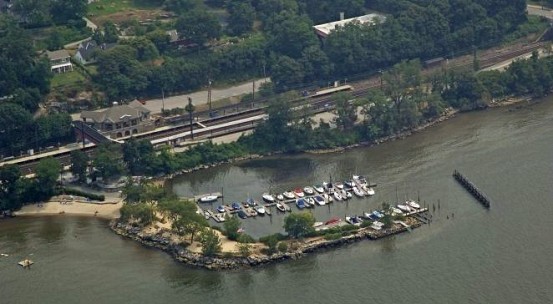
Aerial view of Philipse Manor station, the Hudson Line, and the Hudson River. [image credit]
Our next stop on the Hudson Line is the kind of station that makes me glad I started this exploratory tour two years ago. While there are certainly some very boring, or at least run-of-the-mill, Metro-North stations (many of which I’ve shown you), this is certainly not one of them. Comprised of a lovely combination of history, art, and of course, trains, Philipse Manor is definitely one of the nicer stations I’ve visited.
Similar to many other stations on the line, Philipse Manor overlooks the picturesque Hudson River. Besides the old New York Central-built station building (now occupied by the Hudson Valley Writers’ Center), the platform is guarded over by a large cast-iron eagle. Astute commuters may notice it bears a strong resemblance to the eagle perched over Grand Central Terminal, and rightly so, for these brothers were two of many stationed over the original Grand Central Depot.
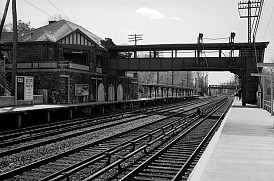 Â
 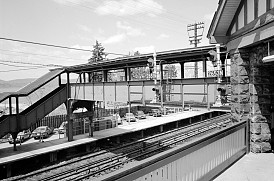 Â
 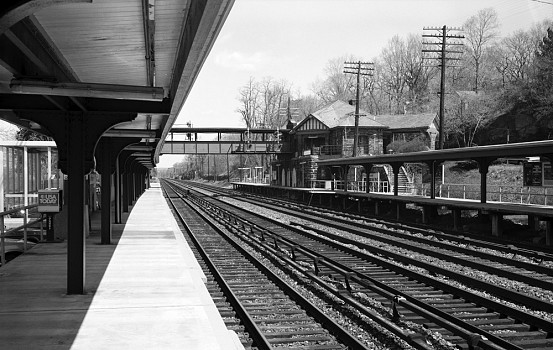
1988 photographs of Philipse Manor. In one of the images you can see the platform sign listing the station as “Philipse Manor, North Tarrytown.”
Located 26.5 miles north of Grand Central, Philipse Manor station is situated in the middle of Westchester county, in the village of Sleepy Hollow – formerly known as North Tarrytown. That name change was fairly recent, even in the early Metro-North days there was a platform sign that listed the station as Philipse Manor, North Tarrytown. The station consists of two side platforms surrounding four tracks. The original station building, which overlooks the platforms, is no longer used by the railroad.
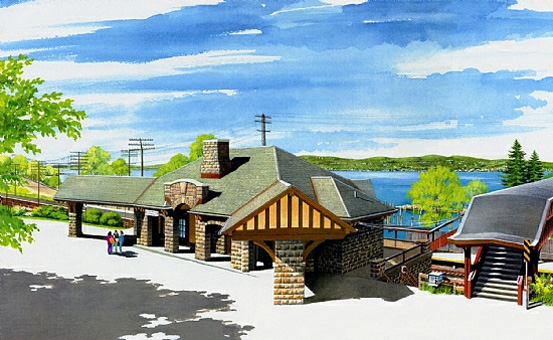 Â
 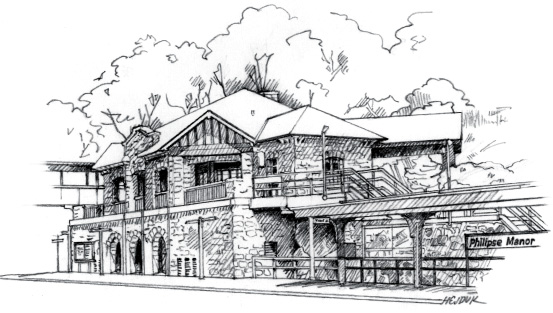
Though the Philipse Manor station may now be home to the Hudson Valley Writers’ Center, artists of all variety seem to frequent the place. The above watercolor of the old station is by Karl Tanner. The lower station sketch by Linda Hejduk is regularly featured in Writers’ Center newsletters.
Over the years so many old depots have been demolished that whenever I hear about a restored historical station, I have to admit, I get a little bit excited. While it is lovely that there are three stations on the Harlem Line that have survived and now house Starbucks, there are a few uses for old train stations that I think fit a bit better – like a library. The old station at Philipse Manor might not be a library, but it is home to the Hudson Valley Writers’ Center. Besides the area being the stomping grounds of the headless horseman of American literary folklore, a historical station seems like a fitting place for artists and writers.
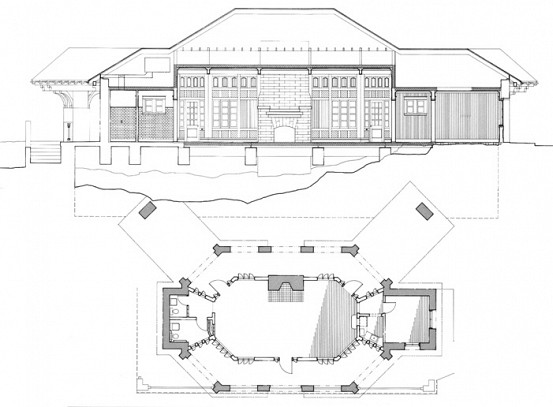
Architectural sketch of Philipse Manor station, created while the station was being restored.
Built circa 1910, Philipse Manor station was constructed into a bluff overlooking the Hudson River. Although one could once enter the station, descend some stairs and exit out of the basement to reach the platform, the lower portion of the station has now been closed off. The arches that provided ingress and egress are still visible on the platform, however. The majority of the station, built in the Tudor revival style, is constructed of rusticated granite, though there is some stucco and wooden trim visible.
Many old stations fall into disrepair over the years, and Philipse Manor was no exception. The station was restored in the early 90’s by Bond Street Architecture, at a cost of around $800,000. Emergency repairs on the roof and stabilization of the building’s frame was completed in 1992, and a full restoration effort began in 1995. The new home of the Writers’ Center opened to the public in 1996. The efforts to restore the station earned the Hudson Valley Writers’ Center the Excellence in Preservation Award in 2005.
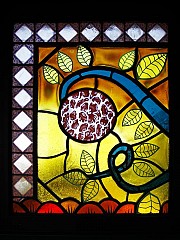 Â
 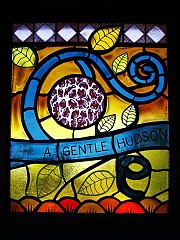 Â
 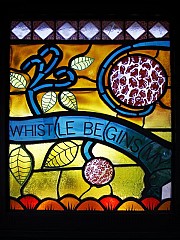 Â
 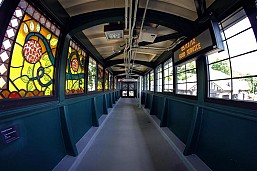 Â
 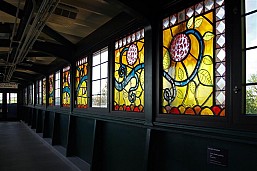 Â
 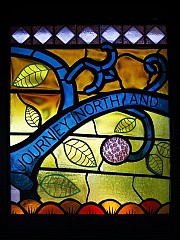 Â
 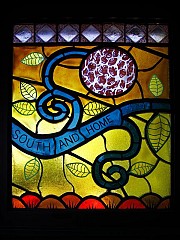 Â
 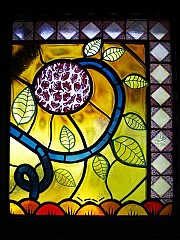
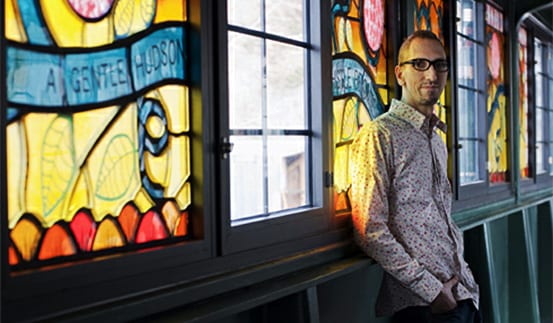
Joseph Cavalieri with his Arts for Transit piece, installed at Philipse Manor. [image credit]
A more recent addition to Philipse Manor is visible in the station overpass. Many Hudson Line stations have undergone recent repair work, including renovations to the station overpasses. When the overpass at Philipse Manor was repaired some lovely stained glass was also included, as part of the Arts for Transit program. The piece was designed by local artist Joseph Cavalieri, and is titled North, South and Home. It is comprised of six panels of faceted glass, each measuring 33 by 42 inches. As I am sure @MetroNorthHaiku would appreciate, the text written across the panels is in fact a haiku:
A gentle Hudson
whistle begins my journey
north, and south and home
The piece was fabricated by Willet Hauser Architectural Glass, which made the glass for Scarborough, and several other MTA stations. Many of the recent Arts for Transit pieces installed at Metro-North stations have been in the medium of stained glass, and I think North, South and Home is one of my favorites, along with the piece at Mount Vernon East.
Hopefully you enjoyed touring Philipse Manor as much as I have! There will, of course, be more Hudson Line touring next week. Until then, here are the remainder of the photos I took at Philipse Manor – including a panorama of the station platform and one of the original Grand Central Depot eagles.



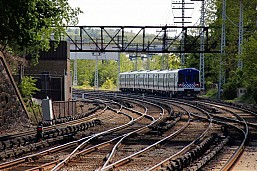
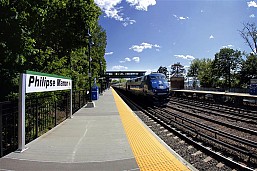
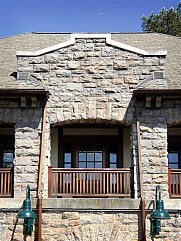
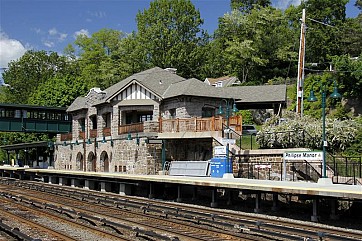

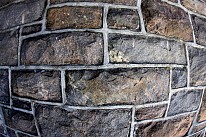
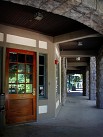
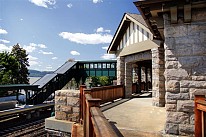
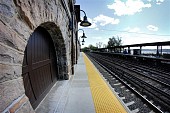
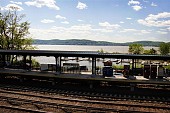
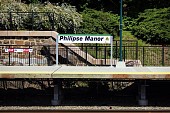

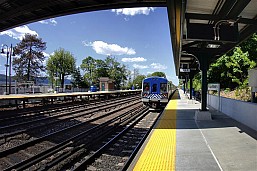
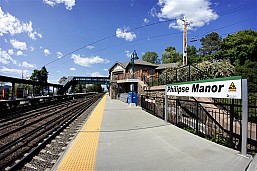
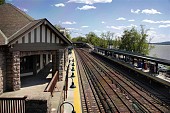
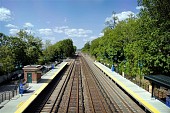
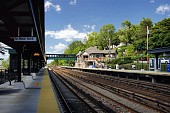
Where do you see a North Tarrytown sign?
On this photo.
Oh….it was hard to tell you meant the old NYCRR signage, not the M-N in the background
Nah, just one of the holdovers from yesteryear… like the Mount Kisco sign that lists the miles to Chatham. Though the one here at Philipse Manor is no longer there…
I’ve been to the station, remember? :p
I know its gone. Also, Croton North still has its hanging of course.
This station also borders one of the most picturesque neighborhoods around. Its rare to find a railroad station in such proximity to a residential area. Reisdents who walk to this station have one of the best commutes around